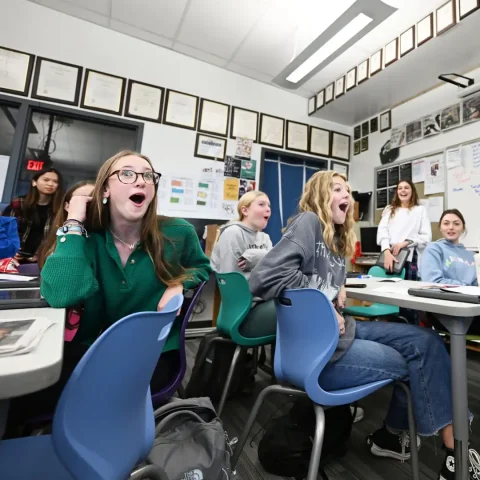Infographics serve as effective method of increasing in-depth coverage
For yearbook journalists, a primary objective is to tell the complete story of the year and infographics are an effective method of increasing in-depth coverage.
Loosely defined, an infographic is any graphic presentation of primarily statistical data, but, in a broader sense, it is any visual or graphic depiction of any piece of significant information that helps to tell a story. Infographics can be used to supplement a written story or they can tell a story on their own.
True, copy and photographs are the most significant elements of yearbook coverage, but graphic images can create a package that will better inform and be more memorable.
It is a foregone conclusion that our society has become increasingly visual in nature. Yearbook staffs can use that to their advantage to better communicate with their audience.
When considering the use of infographics in coverage, keep in mind the following important points:
1. EMPHASIZE IMPORTANT INFORMATION
Use infographics to emphasize information that is significant to the overall reporting purpose. Be sure the information planned to be depicted visually is valuable enough to warrant this type of display and emphasis.
2. PLAN QUESTIONS CAREFULLY
When using survey statistics, choose questions carefully to garner results that can be shown visually. Try to project what the results might be and plan the design of the infographic before gathering the data. The resulting information from a particular question might not be conducive to visual coverage and might be better presented in copy.
3. BE ACCURATE
The information must be accurate. Be sure the reader knows the source. If a survey was conducted, be sure to disclose how many people were surveyed.
4. CHOOSE THE APPROPRIATE GRAPHIC FORMAT
Decide which of the five types of infographics – fever chart, pie chart, bar chart, table or fact box – best communicates the information.
- A fever chart is used to visualize quantities plotted over a time period by means of a rising and falling line. It includes a fever line produced by joining together points plotted on a grid.
- A pie chart divides a whole into its component parts, usually by percentages. It consists of a circle representing the complete number divided up by “spokes” from the center. Pie charts are probably the most common type of infographic used today, but unless they are depicted as pictures or are accompanied by illustrations, they can be very mundane and even boring.
- A bar chart is a visualization of quantities, each one represented by an individual bar or column corresponding to the height or length of the amount being represented.
- A table is any display of numbers arranged into columns. It contains a series of numbers and their subject titles packaged within a grid or framework.
- A fact box is any combination of specific facts and information that does not fit into any of the other categories. Its structure is much looser and there is less of a direct relationship between the graphic images and the information itself. These are probably the quickest and easiest to use and design.
5. MAKE THEM ENTERTAINING
Although some information might be too serious to be considered entertaining, remember to keep the infographics playful. Take important statistical information and draw the reader to it.




